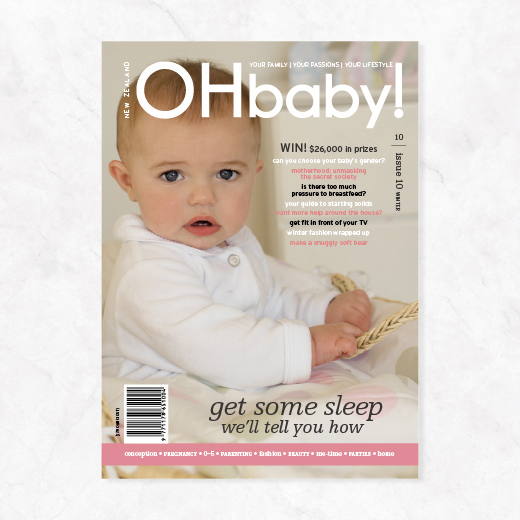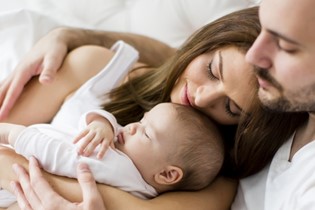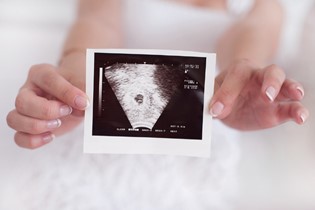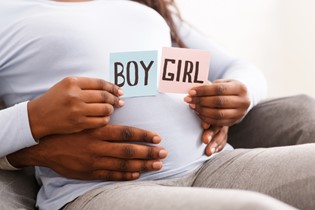Can You Choose Your Baby's Gender?
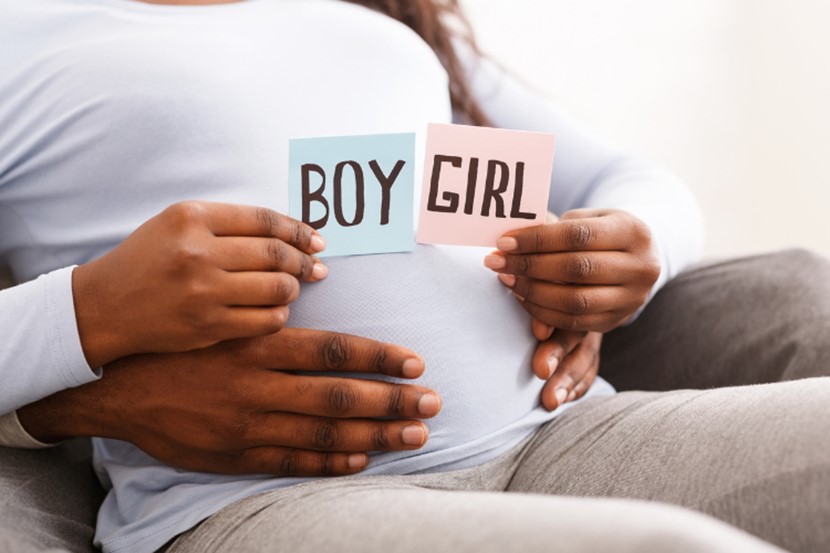
The miracle of conception can be quite well organised, thanks to an increase in knowledge since our parents' generation. We can attempt to organise birth dates and times, but what influence can parents have over gender? Richard Fisher explains the practical and ethical minefield surrounding gender selection.
The ability humans have to reproduce is often as much a product of chance as of planning. The desire to plan conception has led to an increased knowledge about the best times in the menstrual cycle for intercourse to occur. Like all human endeavours, however, we often seek to influence not just the absolutes such as conception, and for many people, trying to influence the gender of their potential baby becomes an important goal as well. Despite the fact that giving advice to enable someone to do this, or to perform a procedure that would ensure it, is illegal in New Zealand, it remains a common query from patients attending reproductive medicine clinics.
The 2004 Human Assisted Reproductive Technologies Act states that "it is illegal for reproductive purposes to select an in vitro embryo on the basis of sex or to perform any procedure, or provide, prescribe or administer anything in order to increase the probability, that a human embryo will be of a particular sex".
There is a defence to a charge under this section, however, and that is that if the gender selection is performed to prevent or treat a genetic disorder or disease. There are some genetic diseases which occur only in males and consequently this may be a rational approach to limiting the likelihood of the presence of this disease in a particular family, although in time, as technology improves, the particular mutation will more commonly be able to be assessed and the rather blunt instrument of gender won't be needed.
Ethical viewpoints and standards vary between communities so it is probably no surprise that this prohibition of gender selection is not universal. Although the United Kingdom and most of the rest of Europe prohibit gender selection, it is an acceptable use of technology in countries such as the United States, Russia, Thailand and a number of other Asian countries. Israel allows the use of gender selection for family balancing where couples may already have a number of children of a particular gender and wish for a further child of a different gender. Clearly there is no single ethical answer to the issue and New Zealand has fallen back on a legal one.
The arguments for and against gender selection have become more polarised since our ability to attain the goal has improved. It seems that our community (through its representatives in Parliament) is tolerant of attempts to choose a child of one gender or the other when the likelihood is not certain.
There has been no objection to couples attempting to influence the gender of their child in many ways for centuries. It is an interesting philosophical point as to when any particular community might decide to move to proscribe gender selection in the continuum of random chance to 100% certainty. The basic underlying ethical issue, to seek to alter the gender, has not changed. Only our ability to do so with accuracy has.
The penalty for breaking the Law in New Zealand is imprisonment of up to one year or a fine not exceeding $100,000, or both. The Law is carefully written as "no person may" rather than "no doctor or clinic", so one might presume that even passing on information in the form of a book might place one at risk.
The history of attempts at gender selection is long. The ancient Greeks apparently advised that men who wanted a boy should lie on their right side. In 18th century France, it was suggested that men tied off their left testis, as this was thought to be the source of female-bearing sperm, if one wished to create a baby boy. More recently, American folk history suggested that for men to have a son they should wear their work boots to bed; also that they should get drunk before intercourse, or that they should take an axe to bed. Hanging one's pants on the right bedpost was also thought to alter the gender balance to boys. I'm not sure whether each of these things were to be done separately or together but either way, they all sound unlikely to be tolerated by a modern woman.
Advice to women seeking a son was that they should eat red meat, they too should lie on their right side (the ancient Greeks might have found this complicated), or alternatively pinch their husband's right testis. Although all the above suggestions can be dismissed as having no scientific basis, nor evidence of success, it did not stop a surge of activity in the quest for natural gender selection late in the 20th century.
There exists a Chinese gender chart, touted to have been found in a tomb 700 years ago and now available for a small fee, which purports to give you up to a 90% chance of conceiving the desired gender based on the days of the month and the status of the moon, but sadly once again there is no evidence at all that this is effective.
The best known name in natural gender selection methods is Landrum Shettles, a scientist turned doctor who published a book How to Choose the Sex of Your Baby in the 1970s. This book sold well over a million copies and was bedtime reading for thousands of couples. Shettles turned some plausible biology about the size, longevity, and speed of X- and Y-bearing sperm into practical advice about how to change the gender balance.
Shettles noticed that male sperm were smaller, moved faster, and were less long-lived than X-bearing sperm, which were also larger and slower. He believed that by having intercourse at the time of ovulation, the male sperm would get to the egg quicker and that fertilisation with a Y-bearing sperm was more likely to occur.
He dressed up the basic concept with further pseudo-science, which included that women should have an orgasm at the same time as their partner as this increased the amount of alkaline secretion present, supposedly also favourable to the Y-chromosome. He thought that if you could deliver the sperm closer to the egg then that would also enhance the conception of a male child and so advised deep penetration at intercourse as well.
Shettles' book continues to sell internationally. Whether this is in the misguided belief that the theory is true, or whether it adds interest to an otherwise recreational pursuit, one cannot tell - but there have now been numerous studies which have refuted this theory.
Among those is a study carried out at National Women's Hospital by my colleague Dr Freddie Graham and his colleague Dr John France. Their data clearly refuted Shettles, and in their study, most conceptions that occurred early turned out to be boys.
A woman reading this paper further went on to interpret that the pregnancies that appeared to occur after ovulation were girls, and so grew another internet group, which went under the name of "O+12" (ovulation plus 12 hours). Once again there is no statistical significance in this information, and the original paper and the perceived outcome became yet another myth about gender selection.
It is of interest that a natural family planning study, of which New Zealand was a participant in the late 1990s, showed that almost no conceptions occurred when intercourse took place after ovulation and that all these previous studies are limited in their statistical significance by the difficulty in accurately determining when ovulation occurred. Shettles went on to be part of a major ethical scandal in the United States regarding early research around IVF without ethical consent and with little scientific rigour.
A Dr Ericisson described a technique for separating X and Y bearing sperm by centrifuging sperm through various gradients to enrich concentrations of each. A number of clinics sprung up worldwide which exploited his initial claims to success until such time as a number of other authors failed to confirm his findings. It is quite clear that this technique alters only fractionally the gender balance.
More recently, a more scientific and now patented technique of sperm separation has been developed in the United States. It is marketed under the name of Microsort. Sperm is passed through a cell sorting system after having been labelled with a luminescent dye, which then separates it into X-enriched and Y-enriched pools using a laser beam that recognises volume differences.
The technique is still being evaluated in a research protocol but current results after inseminating this enriched sperm show that it is about 90% successful for girls and 75% for boys. This technique requires normal sperm concentrations and is both complex and expensive. It is, of course, possible that success rates for both genders will improve in time as the technology improves, although it is unlikely to be 100%.
Gender selection using the technique of preimplantation genetics in combination with IVF has made it possible to be almost certain of the embryo's gender. This means that in people with sex-linked disorders, only embryos of the desired gender can be replaced and future disability avoided. It also means, however, that the social use of this technology has become available in some countries.
The process of IVF, of course, requires the injection of drugs, development of more eggs than usual, the physical collection of these eggs and fertilisation in the laboratory. It is possible to use microsorted sperm to increase the number of embryos of the desired gender but the step beyond this occurs when a single cell is removed from the embryo on the third day of development (when there are about eight cells present) and this cell is tested to determine the gender. This can be done with minimal effect on the embryo. Embryos of the desired sex are then replaced inside the uterus.
Like all IVF, this is not a risk-free process, and neither is it a guarantee of conception, although if conception occurs, the gender is almost certain. IVF success rates vary from around 50% in younger women to less than 10% in women 43 or older.
The decision to do IVF for social reasons surely requires a couple to have not only robust emotional resources but also a fervent desire to have a child of one gender or the other, given its cost. The use of IVF for such a purpose is hotly debated.
Along with the enthusiasm for Shettles and Ericsson came a number of theories about diet and dietary supplements. Stolkowski proferred the view that a diet high in potassium and sodium would more likely lead to having a boy, whereas supplements with calcium and magnesium would help the conception of girl. No clinical evidence is available to support this.
Douching with a lemon (I suspect in diluted form) was said to increase the likelihood of having a girl because of the change towards acidity in the vaginal secretions, and a number of books then followed looking at dietary supplements.
Some of the authors became wealthy; most of the couples were disappointed. The great advantage of gender as an outcome is that every suggestion has at least a 50% chance of being right and if you charge enough, even offering a money back guarantee if you are wrong is likely to lead to financial success.
There are some biological factors that are thought to increase the incidence of one gender over the other. The best example is in post war Holland where after the starvation and deprivation in the Second World War, there was a significant increase in males born in the immediate post war period.
Whether this is evolutionary adaptation or one associated with underlying nutrition directly is currently not possible to discern. With increasing knowledge about the effect of nutrition in the time around conception, it may be that some rational scientific data will become available which will alter gender balance.
Sex ratio - that is, the number of live males divided by the total number of births in a given period of time - is variable under many conditions. There remains a poor understanding of factors that alter this ratio, but there is evidence that external influences can be associated with such change.
Older mothers and fathers having IVF have been shown to produce more girls than boys. Currently there is no explanation available for this. In Holland in the 1980s there were more daughters born to men who worked with pesticides. Anaesthetists of both genders appeared to have more girls. There is certainly lots yet to be gleaned as to the causation of these changes.
Most people are uncomfortable about the primary use of gender selection for social reasons. Many of us can think of couples for whom having a child of a particular gender at a particular time of their reproductive career would have been nice. Whether "it would have been nice" is a good enough justification to embrace the technology is an international debate that will continue long into the future.
Richard Fisher FRCOG, FRANZCOG, CREI together with Freddy Graham established Fertility Associates (www.fertilityassociates.co.nz) in 1987 after previously starting up New Zealand's integrated infertility medicine group at National Women's. He is New Zealand's foremost medical spokesperson on matters of reproductive health and has been an advocate for better access to care for couples with infertility throughout his career.

AS FEATURED IN ISSUE 10 OF OHbaby! MAGAZINE. CHECK OUT OTHER ARTICLES IN THIS ISSUE BELOW
